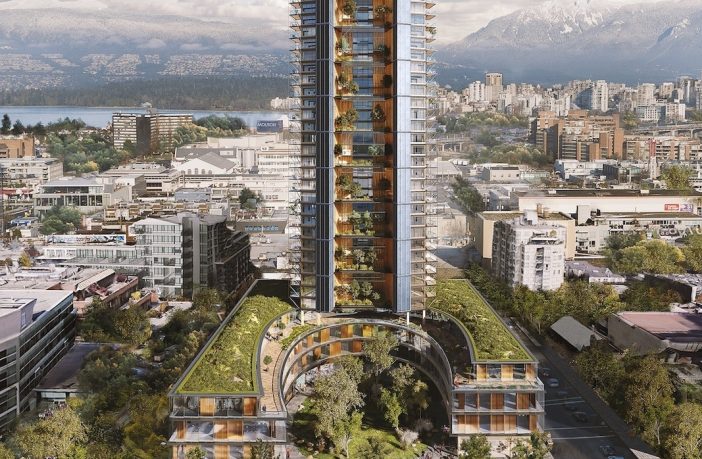Tall timber buildings are on the rise. Design teams around the world are taking advantage of ever-evolving mass timber technologies, resulting in taller and taller structures. Building off our recent article exploring the future of high-rise buildings, we’re taking a deeper dive into new emerging timber technologies and the advantages of building taller with wood. This tutorial explores how to make tall timber structures a reality.

The reasons to build taller with wood are increasingly accepted by the global architectural community. From environmental benefits and speed of construction to building performance and market cachet, the advantages have led to tall timber towers rising across the country and around the world. Architects are now shifting from why to how, looking to understand technical topics such as code requirements, load paths and structural systems, product choices, fire protection, and building performance. Here’s your primer on how to take your timber construction and design to the next level.
The Council on Tall Buildings and Urban Habitat (CTBUH) provides definitions for what constitutes “tall” around the globe. The CTBUH defines the materials from which tall buildings are comprised. Buildings constructed from timber are permitted through “the use of localized non-timber connections between timber elements” and in some cases a “floor system of concrete planks or concrete slab on top of timber beams” since timber still acts as the primary structure. These tall wood projects can be either heavy timber or mass timber.
This year, the International Code Council (ICC) announced approval of 14 code changes as part of the 2021 International Building Code (IBC) that will allow mass timber structures of up to 18 stories. Included in these changes is the introduction of three new construction types—IV-A, IV-B and IV-C. In this context, heavy timber is either sawn lumber or structural glue-laminated timber and is associated with Type IV construction. The surge in mass timber and prefabricated wood construction, and recent changes in building codes to allow for taller wood buildings, is expected to not only save builders money, but also contribute to new economic growth and jobs, a trend that is only expected to continue as more projects come on board.
When building tall, the structural system must be taken into account, including ductility, load paths, and transfer and uplift forces. You should consider connections in the building to address ductility. Load paths can cause elements to experience compression, tension, bending, torsion, or shear. For tall wood buildings, the structural elements are particularly susceptible to shrinkage, and you can address this by utilizing construction where wood grain is parallel to the load path. Stairs or elevator shafts can also be used to transfer loads. Because they are often lighter, wooden tall buildings are susceptible to uplift.
There are a variety of structural approaches that you can consider when designing with wood, all with different advantages. They include platform, balloon, post-and-beam, massive timber bearing walls, and hybrid systems. Structurally, there have been a range of case studies and hybrid structures to look to that address a timber building’s lighter weight, as compared to steel or concrete. As a note, residential buildings will likely be more compartmented with bearing walls while commercial uses will call for more flexible, open floor plans, more easily achieved using a system of bearing posts connected by beams.
The IBC classifies five major construction types, each with subcategories and maximum permissible heights. Type I-A (Unlimited), I-B (180′), II-A (85′), II-B (75′) are for noncombustible construction. Type III-A (85′), III-B (75′), V-A (70′), and V-B (60′) are for light frame wood construction. Type IV-HT (85′) pertains to heavy timber. Each subcategory has its own fire resistance requirements, and these height limits are only permitted on buildings equipped throughout with an NFPA 13 sprinkler system.
After the structural and code considerations are met, you should address fire protection, acoustic, seismic, and thermal standards. Even though mass timber members have natural qualities that resist fire, there are additional steps that can be taken for further protection. Mass timber or heavy timber products can be sheathed in gypsum wallboard, a fire-resistant material, either fully or partially. If done partially, the structure and the ceilings of the building are normally covered. For sound, look to floor, ceiling, and wall assemblies. Likewise, from a thermal standpoint, wood does not need a thermal break between the structural and exterior envelope. In some cases, mass timber can store solar heat energy during the day and release it at night, reducing energy loads.
Looking to dig deeper to build taller with wood? Learn with Think Wood’s continuing education unit Design and Construction of Taller Wood Buildings. Take the Course or check out Wood Works Mass Timber Design Cost Optimization Check List to help you with your next project.
Author: Eric Baldwin
This article was first published in Arch Daily and is republished with permission.


















